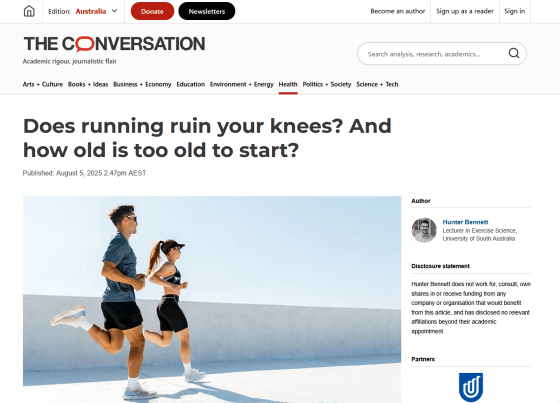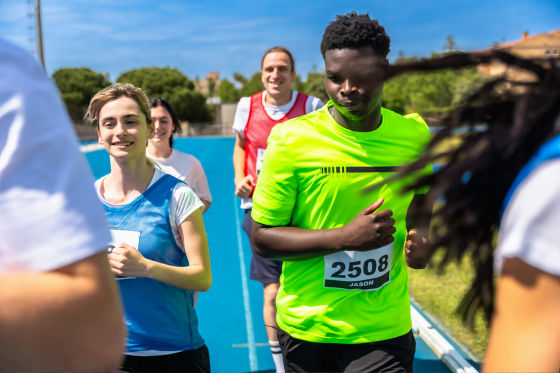Does running have a negative effect on your knees? What should you be careful of when starting to run?

Running is a very beneficial exercise for
Does ruin running your knees? And how old is too old to start?
https://theconversation.com/does-running-ruin-your-knees-and-how-old-is-too-old-to-start-261575

'Running is a relatively high-impact activity,' says Bennett. 'Every time your foot hits the ground while running, your body absorbs a force equivalent to two to three times your body weight. You can imagine that this load falls directly on your knees, and that's true. Your knees absorb three times more force when you run than when you walk.'
But while running puts a lot of strain on your knees, that's not necessarily a bad thing. In fact, running may actually help keep your knees stronger and healthier.
While some may think that our bones and cartilage wear down as we walk and run, this is not the case. Rather, Bennett argues that our bodies are living, dynamic systems that grow and adapt in response to the stresses they put on them, and that they need stress to continue functioning.
The human knee joint is designed to be very strong. The cartilage inside the knee joint is a strong, flexible connective tissue that acts as a kind of cushion to protect the bones in the knee joint. There is evidence that prolonged bed rest or immobilization can begin to deteriorate bone and cartilage .

Running
Evidence supporting this idea includes research showing that runners tend to have thicker knee cartilage than non-runners, and that runners have higher bone density. It has also been suggested that running more may lower the risk of developing osteoarthritis in the knee, but more research is needed to confirm this.
All of these studies point to the positive effects of running on knee health and longevity. Add in the positive effects of running on cardiovascular and metabolic health, and you're in for a treat.

Some people may be hesitant to start running because they think they're too old, but a 2020 study showed that people aged 65 and older who started high-intensity jump training not only saw improvements in muscle strength and function, but also found it safe and enjoyable.
Considering that high-intensity jump training places a much higher load on the knee joint than running, taking up running later in life is considered safe and effective. However, as with starting any new exercise or sport, your muscles and joints need time to adapt to the stresses they are subjected to, so you should start out running at a slower speed.
'With this in mind, it's best to start with interval training - walking short distances, followed by jogging short distances - and then gradually increase the distance you run, giving your body time to adjust,' advises Bennett.
03
Running has a bad reputation for damaging the knee joint, likely because many runners suffer some kind of injury, with knee joint injuries being the most common. However, these injuries are ultimately caused by ' overuse, ' meaning that they are caused not by the running itself, but by running too hard without managing the load. Therefore, injuries can be prevented by running at a moderate load.
Bennett lists three key points for safe and effective running:
1. Start running slowly and don't suddenly increase the volume or frequency of your running. When increasing your running distance, try not to increase it by more than 2km per week.
2. Make sure you eat well, as running uses a lot of energy and your body needs energy to recover. Eating enough carbohydrates and protein may help prevent injuries like stress fractures , and there's also evidence that getting enough calcium and vitamin D may have a similar effect .
3. Running on grass has less impact than running on hard surfaces like concrete, so when you first start running, running on grass two or three times a week can help you get used to the load.
Related Posts:
in Science, Posted by log1h_ik







